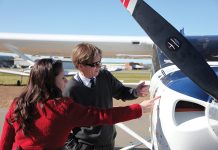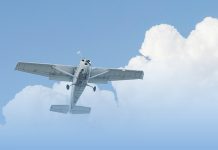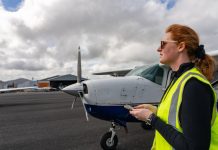This newly minted instructor was jolted out of his complacency by an unexpected thunderstorm
There is a difference between foolishness and being foolish. On this particular day, I didn’t set out to be foolish but, by the time I landed, I realised there had been a measure of foolishness, or at least naivety, in my decision-making.
It was one of those days where VFR flying was out of the question, but the weather seemed by all accounts – both forecast and observation – to be relatively benign. As a newly minted Grade 1 flight instructor, I was keen to be doing more than just the predominantly ab-initio training I had been doing for some time and my colleague was keen to start their IFR rating. A perfect opportunity to take the newly acquired TB10 out for a whirl, we both thought.
The flight from Canberra to Cowra was uneventful and the VOR approach wasn’t too challenging for either of us, in a new type with a different panel and level of gear to what I was used to. However, it wasn’t long before we were cruising to Young in solid IMC, fortunately in strato-form cloud with no turbulence or icing to deal with.
Things became a bit strained during the NDB approach as I was fairly inexperienced in using a radio magnetic indicator (RMI) and the workload was obviously high for the student, despite being an experienced Grade 2 flight instructor with quite a few hours under their belt. My assumptions about both our abilities were beginning to be tested.
Perhaps I sounded tentative, I’m not sure, but during the outbound leg of the approach, the student began to question my directions and at one point exclaimed that they were worried because this was the site of a recent RPT fatal accident during a night circling approach. I advised them to just focus on following my instruction and leave discussion of their misgivings until we were on the ground! Fortunately, we broke visual not long after turning inbound on the final approach and, to my student’s delight and my relief, the runway was dead ahead. I found myself thinking this IFR training thing is not as easy as I thought it would be.
To my horror, I saw we were in a steep bank to the left, with the nose down and speed rapidly increasing.
We continued to the missed approach point and climbed away to set heading for Canberra. I felt I could relax again, as we were in controlled airspace under positive radar control, heading home for a precision ILS approach. The student seemed to settle into a methodical and competent workload management cycle and had everything under control. I was no longer monitoring in an intense manner and my mind started to wander. Just before things quickly became undone, I remember thinking it had become particularly dark and subsequently shrugging it off.
Suddenly, we were being thrown around like a cork in a rough ocean! I quickly glanced across to the primary flight instruments on the other side of the cockpit. To my horror, I saw we were in a steep bank to the left, with the nose down and speed rapidly increasing. I shouted, ‘taking over’ and set about getting things back under control – wings level, reduce power, gently pull back on the yoke and simultaneously hitting the transmit button and asking ATC for descent from 7000 (which we had already left!) to 5000 feet.
Before long it was all over and we were back in the cruise, albeit at a lower altitude and I handed back to the student and began thinking through what had just happened.
To my utter disbelief, within a few minutes exactly the same thing occurred – same rapid loss of control by the student pilot and me quickly intervening to try and save the day! Once again, I requested a descent, this time to the LSALT for the route, which ATC cleared and also helpfully added that they were painting a couple of thunderstorm cells in my vicinity. I sarcastically responded we had found them.
We soon broke visual and I decided we had done quite enough IFR flying for one day and scrapped the planned ILS approach. We landed safely and I remember it being one of only a few times in all my flying that I was very relieved to be back on the ground in one piece. On the other hand, my student enthusiastically exclaimed after shutdown that they had enjoyed the flight immensely and they were looking forward to becoming an IFR pilot. It was painfully apparent to me that neither of us knew what we didn’t know!
I suggested a coffee and chat might be in order, so we could discuss the number of errors that been made during the flight that had possibly come close to killing us both.
Lessons learnt: From then on, I was a lot less complacent with my advanced training and a lot more focused on being fully situationally aware on every flight, even before I left the ground.
Have you had a close call?
8 in 10 pilots say they learn best from other pilots and your narrow escape can be a valuable lesson.
We invite you to share your experience to help us improve aviation safety, whatever your role. You may be eligible for a free gift just for submitting your story.
Find out more and share your close call here.
Disclaimer
Close calls are contributed by readers like you. They are someone’s account of a real-life experience. We publish close calls so others can learn positive lessons from their stories, and to stimulate discussion. We do our best to verify the information but cannot guarantee it is free of mistakes or errors.





